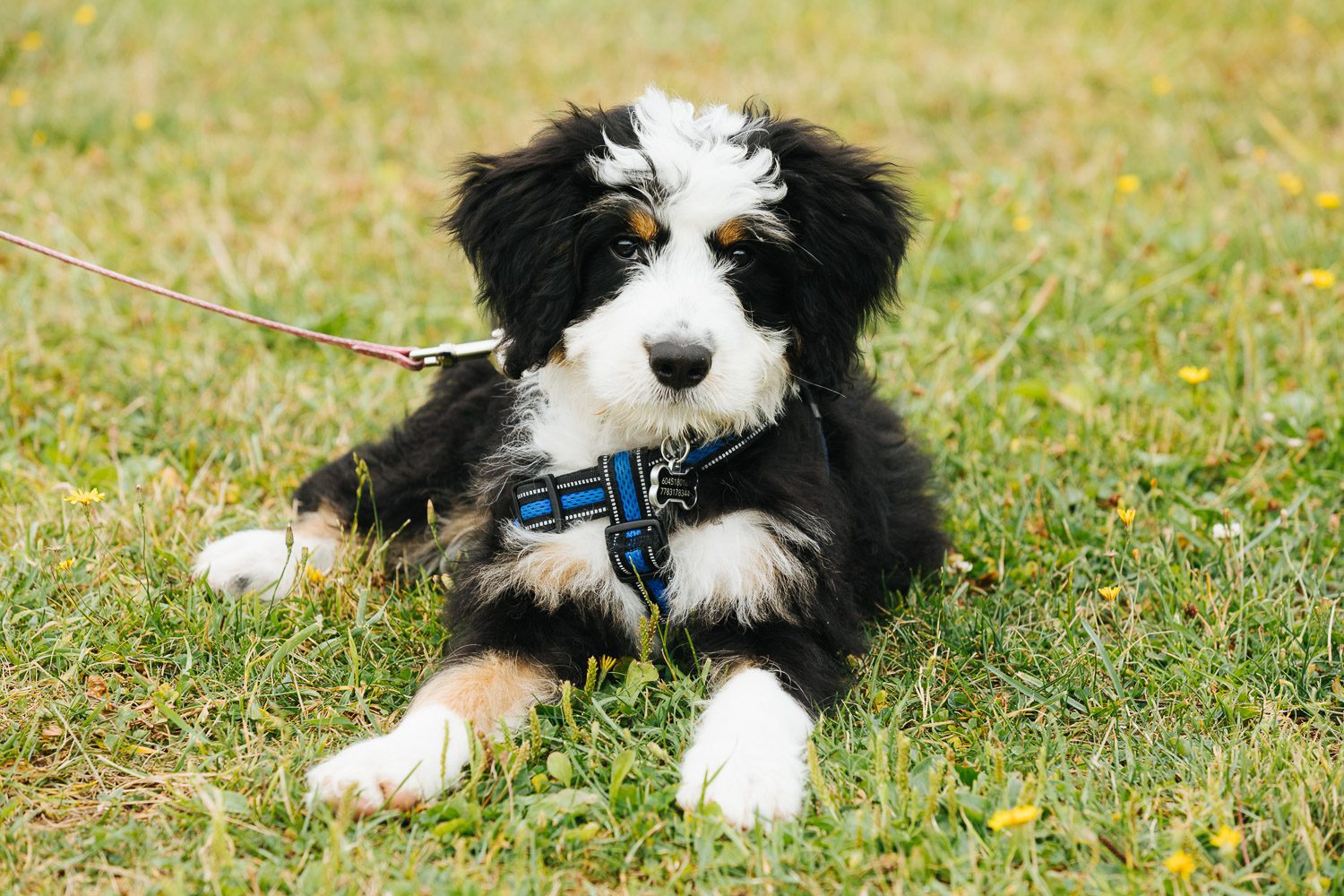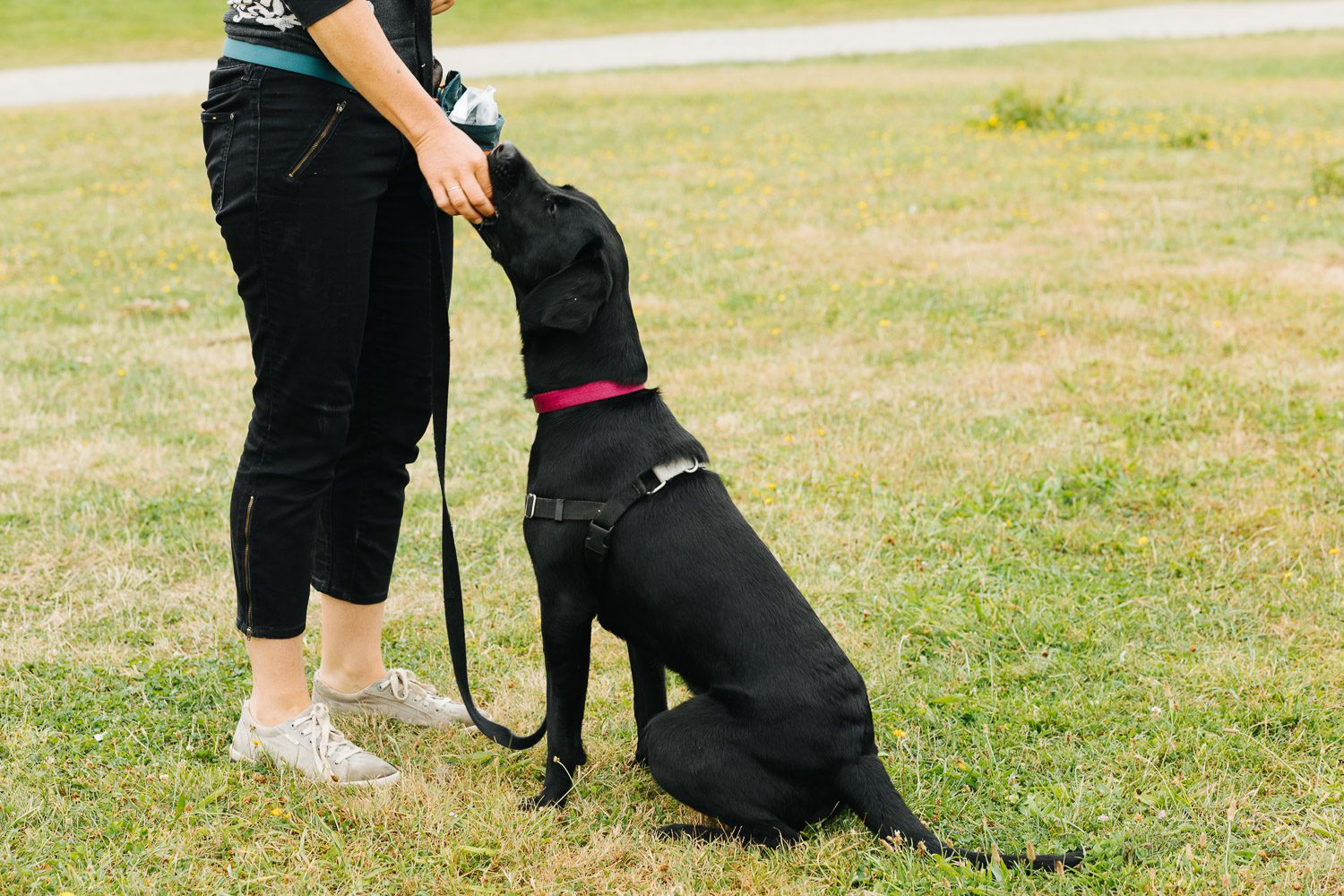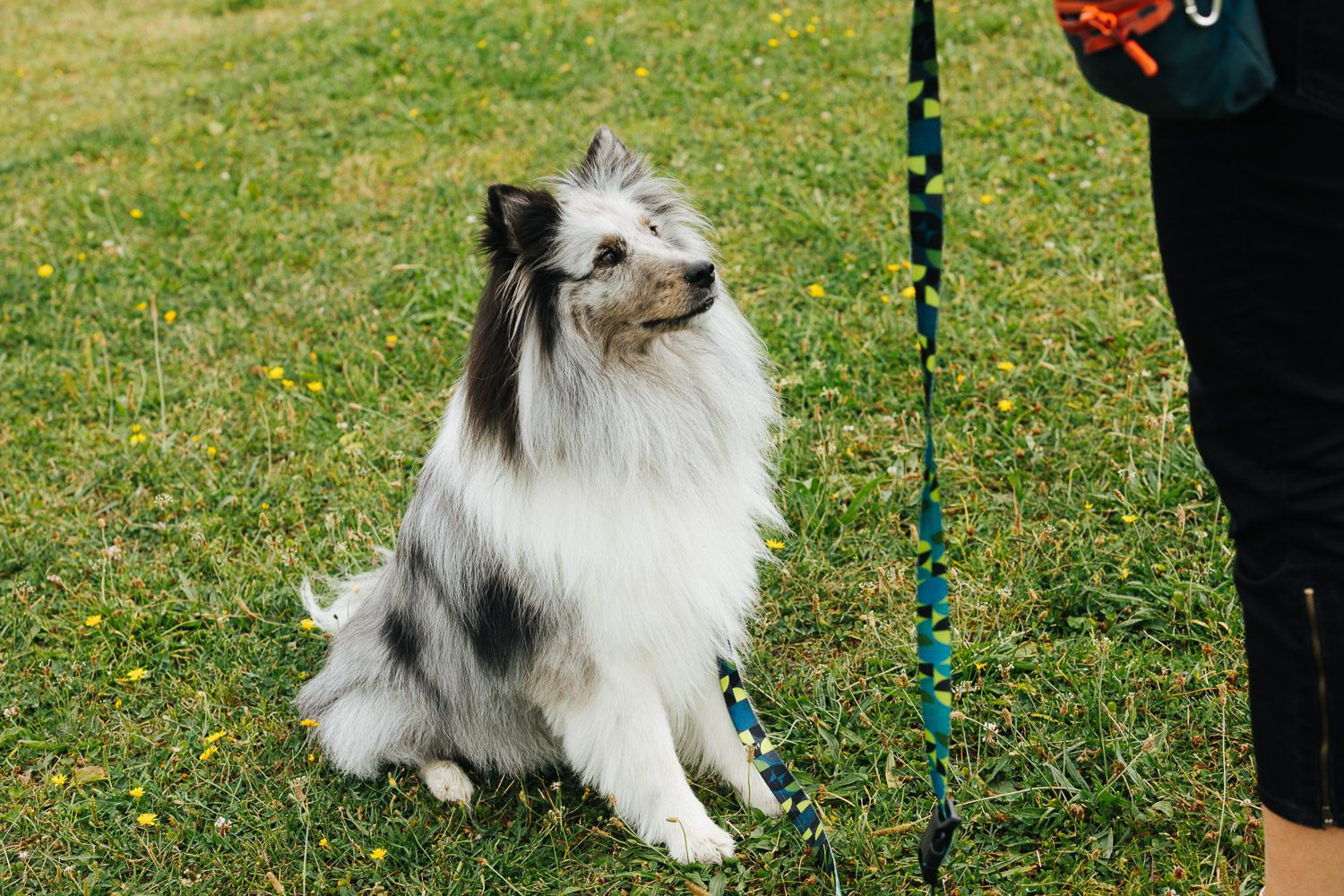Pet parents told us about training challenges they face and we asked BC SPCA recommended AnimalKind accredited trainers to share, in their own words, their advice. Here is what they said:

Training challenge 1: Barking and more barking
Barking at anything and everything! What to do when your dog barks at everyday things like the doorbell, the dryer, and sounds of people walking by your home?
Vanessa Charbonneau, Sit Pretty Pet Services (Prince George)
Barking in dogs is a common concern of many pet parents and it be frustrating! Did you know that barking is a completely normal canine behaviour that serves a variety of different functions?
To get a handle on our dog’s vocal outbursts, it’s first important to understand what they are trying to communicate. Are they barking for attention? Or perhaps they are playing the part of “watch dog” at the window. Are they barking out of fear, to make the scary thing go away?
Once we have established Fido’s motivation, let’s work at changing the picture for him. In the case of Watchdog Willy, it can be as easy as closing the curtains to block the dog’s view of people passing by. If your dog is barking for attention, what would you like him to do instead? Maybe teach him to bring you his favourite toy to replace the boisterous barking. If your dog is afraid, start by addressing the underlying fear, and work to build your dog’s confidence at a safe distance away from the scary object or person.
Fear is typically the more difficult bark to work with so employing the help of an AnimalKind accredited positive reinforcement trainer to restore some “quiet” back into your home is the ideal approach!
Training challenge 2: Reactivity
Reactivity to other dogs and, small animals. What to do when your dog barks at every dog he sees on a walk and pulls to get closer? Or when a pup is reactive to small animals like squirrels and cats?
Lisbeth Plant, Cowichan Canine Behaviour & Training (Cowichan Valley)
The first thing to consider is management. Don’t expose your dog to the “trigger” that causes the problem behaviour. For example:
- if your puppy chews shoes, put the shoes in the closet
- if your puppy barks excitedly at cats, keep him away from cats
- if your dog is barking, lunging, or growling at other dogs, keep him away from other dogs. For example, change your walking route.
Next, work on classical counter-conditioning. Begin by making sure that your dog feels safe, i.e. far enough away from the scary trigger that he is not reacting. Immediately when your dog becomes aware of the trigger, start feeding yummy treats. If he will not take treats, move further away from the trigger. Keep feeding until the scary thing goes away. Feed fast: one treat per second is too slow! Stop when the trigger disappears. Eventually the trigger will come to signal to your dog that good stuff happens when the trigger appears.
If done correctly, this serves to change your dog’s emotional response to the presence of the trigger. Then you can move to the next stage, which is teaching an incompatible behaviour. Since you have changed the emotional response, your dog now looks to you for treats when he sees the trigger. You can now teach him what he should do instead of reacting. For example, you can teach him to walk at a heel past the formerly scary trigger.
Consult an AnimalKind accredited trainer for help with implementation of your training plan. If your dog’s reactivity is severe, you may also consider asking your veterinarian for a referral to a veterinary behaviourist.

Training challenge 3: Body sensitivity
A 14-month-old who has been in training since he was five months. Due to his allergies and skin sensitivity, he gets grumpy when he breaks out (and who wouldn’t!). His “pawrents” are working with a vet for his allergies, but he is starting to growl at anyone trying to touch his ears, feet and belly.
Allison Schaefer, Ethical Canine (Victoria, Langford and Sooke)
This question really highlights the impact of medical issues on behaviour. If an animal is feeling sick or is in pain, it can be challenging and maybe even impossible to change their behaviour. I think most people can really relate to this!
As this is a medical issue and hopefully can be resolved, I’d suggest management whenever possible. The pup shouldn’t be touched by strangers unless it’s absolutely necessary. If there are small children in the dog’s family, it would be especially important to monitor their interactions. Additionally, he should not be punished for the growling – this risks further escalation of the behaviour.
I recommend brainstorming some skills the guardian could teach to avoid having to handle the dog in the sensitive areas when he’s having a breakout. For example, they could teach him a “hand target” cue to move him on and off furniture, instead of touching him, or teach him to “spin” on a mat instead of picking up his feet to dry with a towel when coming inside.
Cooperative care and consent exercises can teach dogs to participate in their own medical care. These strategies train animals to associate handling with high-value food rewards and also teach them that the handling will stop if they indicate that they are uncomfortable. There are many excellent resources available online, one of which is The Bucket Game by Chirag Patel.

Training challenge 4: Is it stubbornness?
Dogs not following cues. We have a case of a 10-month old pup who refuses to sit when asked. Her “pawrents” think she is stubborn, are they right? How to work with her, so she learns to sit and stay?
Sherry Antonishen, SmartDog Training & Consulting (Saanich and Victoria)
Not sitting on cue can be frustrating but is often about missed steps in learning rather than stubbornness on your dog’s part. One category of missed steps is distractions (other things your dog wants). Learning to “sit” with distraction needs to be broken down into small chunks, just like a musician learns to play by learning notes and then playing smaller sections at a slower pace, before working into the full song.
One of the easiest ways to get success is to increase the distance from a distraction until you find your pup’s successful starting point. You may need to start in an area with no distractions (for example, in your house or yard). Using really good reinforcers (like yummy treats) will help most dogs achieve success. If your dog really wants the distraction (and it’s safe for them to access it), cue “sit” while your dog is still a long way from the distraction, then release them with an “okay” using the distraction itself as the reinforcer! For example, if your dog wants to approach another dog to play (the distraction), ask for “sit” while your dog is still a long way from the other dog, and when they sit, release them to go and play.
Another type of distraction is being uncomfortable. Asking your dog to “sit” while wearing a harness that’s tight or near loud noises may be uncomfortable or stressful for her. Asking dogs to sit to allow a child to pet them makes a lot of sense, but if your dog is uncertain of children, it can create tension around sitting. In these situations, we want to know what’s causing the discomfort and help make our dog feel more comfortable. Getting a better fitting harness or pairing food with loud sounds may be needed before “sit” can happen successfully under these conditions.
Training challenge 5: Jumping up when greeting
Jumping greeter. A dog who gets very, VERY, excited when meeting people. What’s a good way to stop a dog from jumping up when greeting?
Laura McAlduff, Quest Canine Support and Education (Sechelt)
When your dog says “hello” by jumping up to greet people I suggest a four-step training protocol to get them back on track to politeness.
Step 1: manage the variable in your environment (people!) by asking visitors to please ignore your dog.
Step 2: teach your dog an alternative behaviour such as “sit” or “spot” (you will need a platform or mat for spot, so sit will be easier in some places).
Step 3: reinforce the alternative behaviour with something that is equally or more enticing than jumping up on people. I recommend a high-value treat, such as dehydrated or fresh meat or cheese. If your dog jumps when they get excited, try not to reinforce with something that gets them too excited like a toy or social attention.
Step 4: practice makes perfect! Always set your dog up for success by having good treats at the ready and by giving clear instructions to people that you need them to ignore your dog.
What happens if they DO jump up? Instruct people to turn around if your dog jumps up, to remove any potential reinforcement for this behaviour, and have your dog harnessed and leashed when they meet people to prevent mistakes.
Resources for dog parents
- Learn about humane training and how happy training makes happy dogs
- Find an AnimalKind accredited trainer near you!
Stay informed!
Subscribe to AnimalKind.
The BC SPCA uses your personal information to update you on our work for animals as well as for advertising and analytics purposes. More information on uses and how to opt-out can be found in our Privacy Policy.
